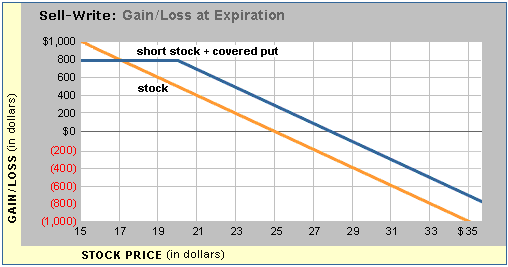Currently, XYZ trades at $25/share. An investor would like to participate in some of the downside movement in the stock and generate additional income at the same time. Using the Sell-Write strategy, the investor sells the stock (100 shares) and sells one out-of-the-money put ($20 strike price) for $3.00 per contract, for a total cash credit of $300.00. If the stock declines below $20.00/share, the total gain is capped at $800.00. The stock must rise above $28 (the breakeven price) before the investor loses money, so the short put provides limited upside protection.

 EXAMPLE - Sell-Write
EXAMPLE - Sell-Write